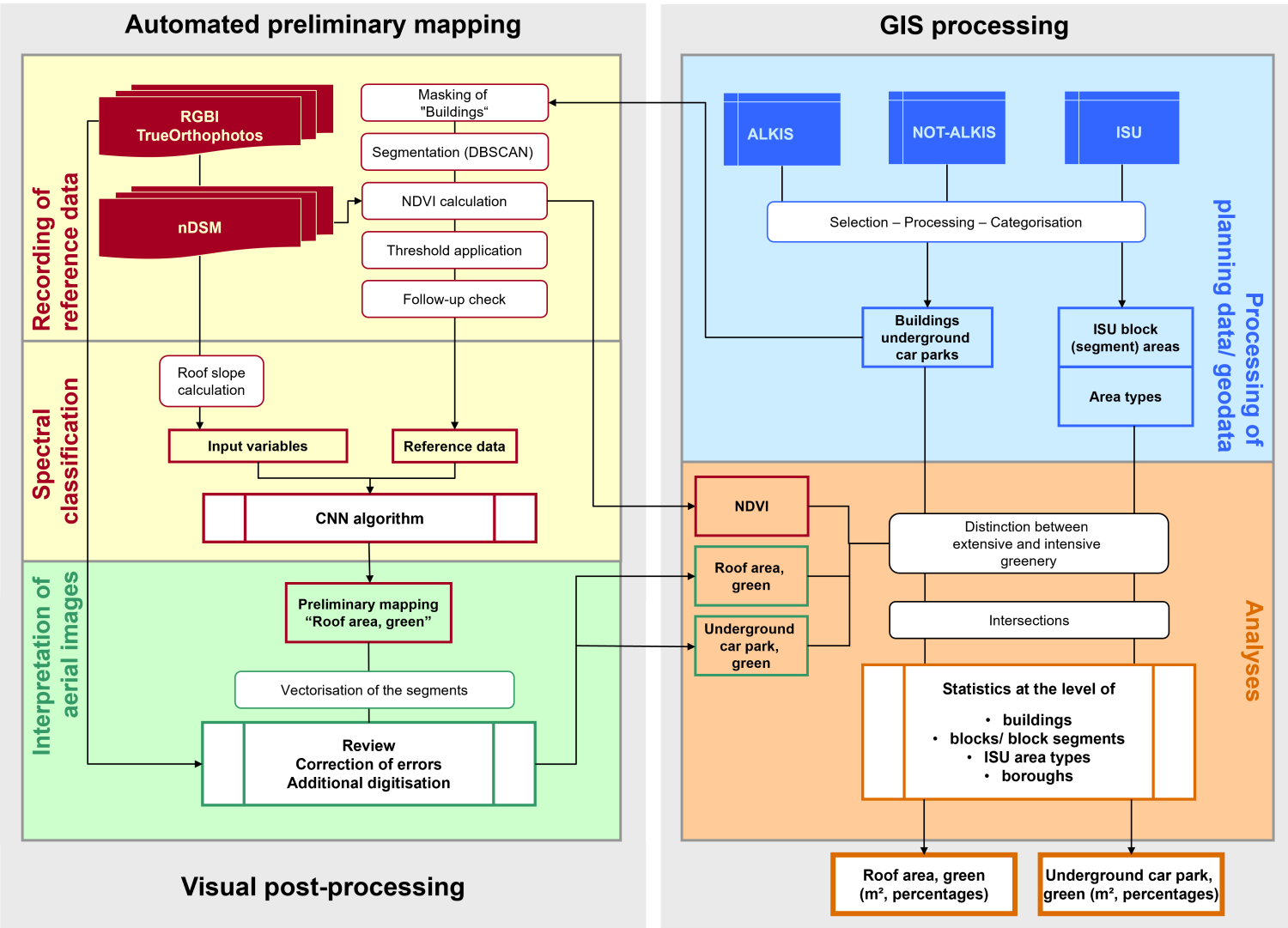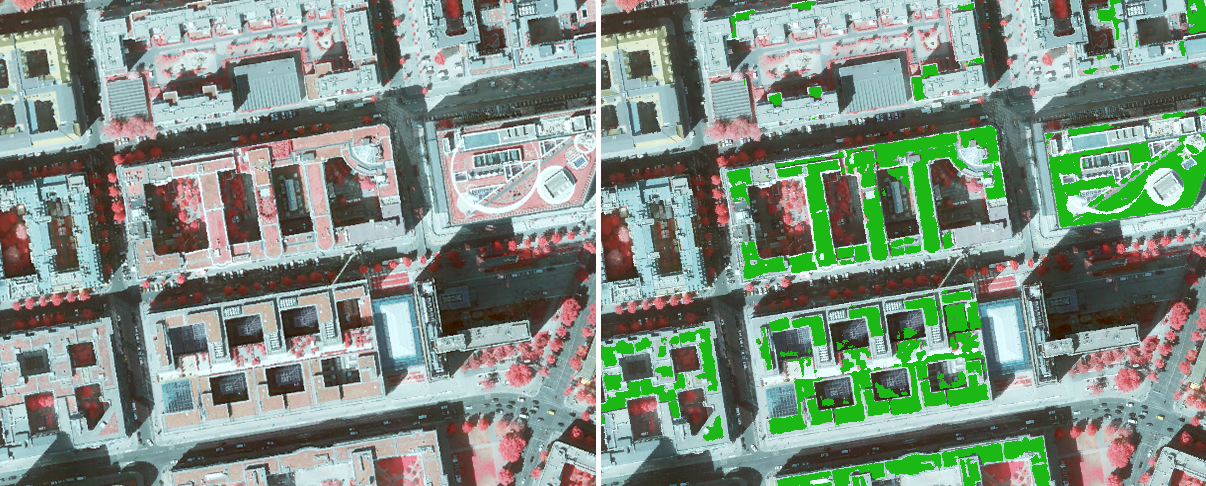As part of the automated preliminary mapping, a supervised classification was carried out to predict the location of green roofs. For this, detailed reference data had to be recorded for a section of Berlin (~2,000 ha). The process of deriving this reference data was based on building outlines, which defined the areas for analysis, i.e. only these areas were searched for vegetation. Buildings that were not listed in the data bases (ALKIS, NOT-ALKIS) were not analysed. A combination of unsupervised classification and threshold analysis, using the Normalised Difference Vegetation Index (NDVI), was found to be a suitable approach for detecting green roofs within the analysed areas.
Initially, density-based clustering (DBSCAN) was applied to the areas within building outlines that were analysed. DBSCAN is an unsupervised algorithm that groups pixel values together within a feature space, based on their spatial proximity, therefore dividing them into segments. In addition to the spectral data of the TrueOrthophoto, the object height (nDSM) was also factored into the analysis. The segments were then characterised by their NDVI. An average NDVI of more than 0.1 led to a preliminary detection of a green roof. The NDVI is a synthetic channel that combines information from the near-infrared (NIR channel) and the red spectrum (red channel), which highlights vegetation areas in particular. Numerous studies found that this additional channel was useful for differentiating between surfaces with and without vegetation, and for classifying degrees of impervious coverage (Coenradie et al. 2021, Coenradie & Haag 2016a). As the section used for deriving reference data
was rather small (~2000 ha), the preliminary detection of green roofs were adjusted easily, based on a visual correction. The corrected data was then used as an accurate reference in the supervised classification.
A Convolutional Neural Network (CNN) was used for the supervised classification. It is a type of neural network that has become popular in the classification of image data, as its prediction also considers spatial structures within the image in addition to the spectral signature (Kattenborn et al. 2021). One of the most widely used CNN architectures is the U-Net, which was also used to detect green roofs in this project (Ronneberger et al. 2015). In addition to the reference data described, the supervised classification also requires relevant input variables. These include the spectral bands of the orthophoto, the normalised Digital Surface Model (nDSM) and the slope of the roof surface derived from the latter. After training the algorithm, the model was applied to the rest of the area to be investigated, which simplified the subsequent mapping process. Due to the high data requirements of neural networks and the rather small data pool of derived reference data, post-processing
was an essential part of the workflow. Fig. 2 presents the prediction of the model for a small sample area.


